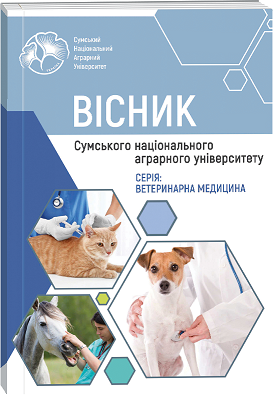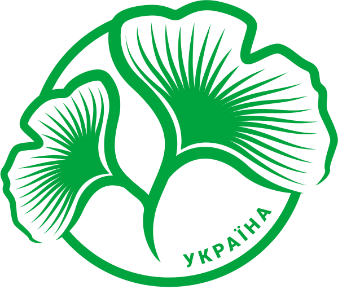MODERN ASPECTS IN COW REPRODUCTION TECHNOLOGY
Abstract
Today, successful management of dairy farming requires a well-thought-out organization of veterinary services, ensuring a rhythmic process of reproduction and solving an extremely complex problem: simultaneously with increasing milk productivity, ensuring high reproductive capacity, extending the period of intensive use of cows. Modern cow reproduction technologies are aimed at increasing the productivity and fertility of cattle to ensure high efficiency of animal husbandry. The main directions of innovation in this area are biotechnological methods of reproduction, such as artificial insemination, ovulation induction and genetic selection. Special attention is paid to hormonal methods of controlling the reproductive cycle, which allows to optimize the timing of insemination and increase the percentage of fertilization. Research is also being conducted on the influence of housing conditions, balanced nutrition and reduction of stress factors on the reproductive health of cows. Synchronization programs have become standard components of current breeding cow management in dairy herds in most dairy industries. Estrus synchronization and artificial insemination continue to be major impact technologies for cattle producers in terms of genetic improvement, reproductive management, and animal reproductive and productive performance. Only compliance with all aspects of synchronization of sexual drive, ovulation and insemination of cows makes it possible to constantly obtain up to 50% fertilization for cows and up to 70% for heifers, which will ensure the successful management of the economy of the dairy farm due to the elimination of wasted resources on infertile cows and timely receipt of newborn heifers to repair the herd. Synchronization also helps to identify problems with reproductive health (endometritis, ovarian cysts) and take timely measures to solve them, which helps to reduce the percentage of animal culling due to infertility. Therefore, the synchronization of heat and ovulation allows to use the potential of the herd as effectively as possible, improving the reproductive efficiency, profitability and productivity of the farm. This ensures not only the stability of milk production, but also the optimization of the use of resources and labor.
References
2. Bekara, M. E. A., & Bareille, N. (2019). Quantification by simulation of the effect of herd management practices and cow fertility on the reproductive and economic performance of Holstein dairy herds. Journal of dairy science, 102(10), 9435–9457. https://doi.org/10.3168/jds.2018-15484
3. Bekara, M. E. A., & Bareille, N. (2019). Quantification by simulation of the effect of herd management practices and cow fertility on the reproductive and economic performance of Holstein dairy herds. Journal of dairy science, 102(10), 9435–9457. https://doi.org/10.3168/jds.2018-15484
4. Borş, A., Borş, S. I., & Floriștean, V. C. (2024). Mastitis impact on high-yielding dairy farm's reproduction and net present value. Frontiers in veterinary science, 10, 1345782. https://doi.org/10.3389/fvets.2023.1345782
5. Helbling, I. M., Karp, F., Cappadoro, A., & Luna, J. A. (2020). Design and evaluation of a recyclable intravaginal device made of ethylene vinyl acetate copolymer for bovine estrus synchronization. Drug delivery and translational research, 10(5), 1255–1266. https://doi.org/10.1007/s13346-020-00717-4
6. Liu, W., Du, C., Nan, L., Li, C., Wang, H., Fan, Y., Zhou, A., & Zhang, S. (2023). Influence of Estrus on Dairy Cow Milk Exosomal miRNAs and Their Role in Hormone Secretion by Granulosa Cells. International journal of molecular sciences, 24(11), 9608. https://doi.org/10.3390/ijms24119608
7. Moore, S. G., Hamilton, S. A., Molina-Coto, R., Mayo, L. M., Rodrigues, R. O., Leiva, T., Poock, S. E., & Lucy, M. C. (2021). Reproductive performance of early- and late-calving dairy cows artificially inseminated after ovulation synchronization and estrous resynchronization or artificially inseminated after observed estrus. JDS communications, 2(2), 80–85. https://doi.org/10.3168/jdsc.2020-0035
8. Stevenson, J. S., & Britt, J. H. (2017). A 100-Year Review: Practical female reproductive management. Journal of dairy science, 100(12), 10292–10313. https://doi.org/10.3168/jds.2017-12959
9. Vidal, L., Álvarez, J., Yáñez, U., Caínzos, J., Muíño, R., Becerra, J. J., Peña, A. I., Quintela, L. A., & Herradón, P. G. (2024). Evaluation of Anogenital Distance and Anti-Müllerian Hormone Plasmatic Concentration as Potential Phenotypes to Predict Reproductive Performance in Holstein Heifers. Veterinary sciences, 11(10), 495. https://doi.org/10.3390/vetsci11100495
10. Wagener, K., Drillich, M., Aurich, C., & Gabler, C. (2021). Endometrial Inflammation at the Time of Insemination and Its Effect on Subsequent Fertility of Dairy Cows. Animals : an open access journal from MDPI, 11(7), 1858. https://doi.org/10.3390/ani11071858

 ISSN
ISSN  ISSN
ISSN 



